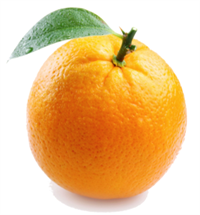
PUMPA - SMART LEARNING
எங்கள் ஆசிரியர்களுடன் 1-ஆன்-1 ஆலோசனை நேரத்தைப் பெறுங்கள். டாப்பர் ஆவதற்கு நாங்கள் பயிற்சி அளிப்போம்
Book Free Demo1. The diameter of an orange is 7 \ cm. Find the surface area of 50 oranges.

Solution:
Diameter of an orange, d = 7 \ cm
Radius of an orange, r =
Surface area of an orange = Surface area of a sphere
= 4 \pi r^2 sq. units
=
=
= 154
Surface area of an orange = 154 cm^2.
Surface area of 50 oranges:
= 154 \times 50
= 7700
Therefore, the surface area of 50 oranges is 7700 \ cm^2.
2. The radii of the frustum of a cone are 6 \ cm and 2 \ cm, and the height of the cone is 5 \ cm. Find the total surface area of a frustum of a cone.
Solution:
Let R = 6 \ cm, r = 2 \ cm and h = 5 \ cm.
Slant height, l = \sqrt{h^2 + (R - r)^2}
l = \sqrt{5^2 + (6 - 2)^2}
l = \sqrt{25 + 16}
l = \sqrt{41}
l = 6.4 \ cm (approximately)
Total surface area of frustum of a cone = \pi l(R + r) + \pi R^2 + \pi r^2 sq. units
T. S. A. = \frac{22}{7} \times 6.4 (6 + 2) + \frac{22}{7} (6^2 + 2^2)
= \frac{22}{7} \times 6.4 \times 8 + \frac{22}{7} (36 + 4)
= \frac{22}{7} \times 51.2 + \frac{22}{7} \times 40
= \frac{22}{7} \times (51.2 + 40)
= \frac{22}{7} \times 91.2
= 286.63 (approximately)
Therefore, the total surface area of the frustum of a cone is 286.63 \ cm^2.
Important!
The value of \pi should be taken as \frac{22}{7} unless its value is shared in the problem.